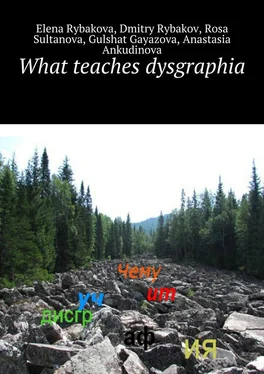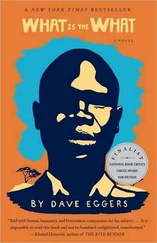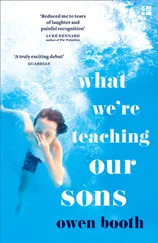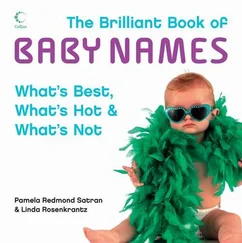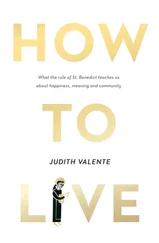Gulshat Gayazova - What teaches dysgraphia
Здесь есть возможность читать онлайн «Gulshat Gayazova - What teaches dysgraphia» — ознакомительный отрывок электронной книги совершенно бесплатно, а после прочтения отрывка купить полную версию. В некоторых случаях можно слушать аудио, скачать через торрент в формате fb2 и присутствует краткое содержание. ISBN: , Жанр: Здоровье, psy_generic, на английском языке. Описание произведения, (предисловие) а так же отзывы посетителей доступны на портале библиотеки ЛибКат.
- Название:What teaches dysgraphia
- Автор:
- Жанр:
- Год:неизвестен
- ISBN:9785449088819
- Рейтинг книги:5 / 5. Голосов: 1
-
Избранное:Добавить в избранное
- Отзывы:
-
Ваша оценка:
- 100
- 1
- 2
- 3
- 4
- 5
What teaches dysgraphia: краткое содержание, описание и аннотация
Предлагаем к чтению аннотацию, описание, краткое содержание или предисловие (зависит от того, что написал сам автор книги «What teaches dysgraphia»). Если вы не нашли необходимую информацию о книге — напишите в комментариях, мы постараемся отыскать её.
What teaches dysgraphia — читать онлайн ознакомительный отрывок
Ниже представлен текст книги, разбитый по страницам. Система сохранения места последней прочитанной страницы, позволяет с удобством читать онлайн бесплатно книгу «What teaches dysgraphia», без необходимости каждый раз заново искать на чём Вы остановились. Поставьте закладку, и сможете в любой момент перейти на страницу, на которой закончили чтение.
Интервал:
Закладка:
The degree of complexity and theme of the text work is discussed operatively and analytically, in an accessible and concise manner.
The speed and extent of the finical speaking with adults and adjusts calculate, not too monotype, one to enough to support psiho-emotsional flax and communicative favored.
The methods of control and self-control of the quality of work, the conditions of productivity and health savings according to the student’s intention, or in agreement with him, are dosed, improved, and analyzed. Without excessive didacticism and edification, lively, witty, diverse, laconic, avoiding excessive pedagogical evaluation and preferences of the teacher’s opinion.
For the promptly selective organization of the writing process, we propose, for example, that the child, in the course of a corrective session, be able to choose, in a motivated or random way, an option of noisy action, against the background of color drawings, landscape photographs, chaotic and rhythmically applied strokes, spots, curls and ornaments and similar materials without emphasis on argumentation, justification – “as it seems more convenient or interesting” Here we emphasize the significance of each moment of employment of the child, his sensations, opinions, impulses. What we call today significant vagaries in didactics and the general life activity of a child, in particular a child with limited health opportunities, allows often ‘corrected, warn reaktsentiring be and overcompensate very serious problem of child developed, socialization, macro- oh diskompensation.
The choice of writing tools – immediate, but bright, sensori-motor satisfying, satisfictionared component of the more effective, there is for the givens on the efficiency, accuracy, carefully, pattern matching. Finds and interesting effects it makes sense to analyze after the fact, after the child will experience both sensory and subject- activity- compiling unusual way organized Foot letter, the results, felt his new activity- status in the loading area for themselves and get a motivational impulse to self-development, self-organization in this – and other areas of activity.
The transition to more pronounced components of autonomy, selectivity, design in the organization of the child’s activity in this training occurs more often spontaneously, and pedagogical developmental and corrective support is provided with minimal inclusions, only if necessary. Even with the incomplete rightness of the decision, the choice of the student – style, for example, or design, writing in complex versions of written projects, it makes sense to provide a pedagogical pause, for the current self-analysis, then tactfully propose options, adjustments, weighted building intersubject dialog. Of course, aerobatics of the correctional, and in general developing process – when the teacher or the parent consults the child as little as possible during the didactic” quest " – and in the right places is justified but says: “Wow, you!” And” Will you come myself small?”, “How did you guess?”. Or let the child indulge in contemplation, replication, demonstration and discussion of the product of his labor as much as he really needs – and not as much as corresponds to age and disciplinary standards. We often do not know what kind of internal work he is doing at the same time, what conclusions and decisions should come on his personal program.
Together with the children, we establish real difficulties and the origin of imaginary, optimal load and correctional- educational routes along the course of diagnostics and correction, introduce operational adjustments and restructuring components of cooperation.
Separate, categorically important components of targeted cooperation between children and adults is the identification of development resources and areas of priority development, which is often forgotten not only by parents but also by children, but also by pedagogues, considering the inadequacy of functions only in a negative and restrictive way.
Often, by examining the degree to which the student’s achievements and abilities correspond to the training program, it is possible to miss, for example, the signs of verbal sensitivity and verbal intelligence, the poetic nature of the mental frame or perception, the unusual priority area, the technicality of introspection or overcoming difficulties, achievements in the field of personal interests or emotional- volitional regulation.
Together with the student it is not out of place to even try to use such resources in the educational process – even to try to find out. For example, if we ask the schoolchild’s opinion about his problems in teaching, we do not, in the absence of a coherent position, presume, of course, on a necessarily reasoned answer. But often later this child can detect not only the continued understanding of the issue, but also the readiness for a conscious decision, and the unusual approach, and valuable findings. Sometimes the posture and the communicative status of the pupil are changed, and the effectiveness of all educational activity in a fairly short period.
A free, individualized, responsive organization of employment, a willingness to give priority to the positioning of activities, and also to be surprised at the personal discoveries of children allow me to ensure the targeting and positivism in the approach to accompanying children with neurological disorders, including ADHD, and also provides an operational resource for the correction of secondary developmental defects and social discomfort.
Moreover, nowadays there are tendencies towards an orrelating increase in the neuropsychic changes in the children’s population, in accordance with the society’s demand for a highly informational transformation of human vital activity, which determines the direction of the development of the social and educational environment. Children are massively discovering the need for high-voltage multi-channel information employment, and the prospects for their professional implementation also imply a significant change in the standards, structure, content of activities, to which we must apply today and prepare pupils to conform in the future.
Adjusting pedagogical support under temporitmic, style, energy context, there is a verbal environment student, saving time and attend the more tense important, multi-task, the student concentrates on understanding the relatively new and load information for themselves and the easier it is to master the elements comparing the style and structure of more or less conventional con tents that the compared object ‘s not too distanced from each other and from its earned register in organic perfecting – that naturally precedes the effective comparison and analysis.
The tasks, their orientation and the level of complexity are subject to the maximum possible discussion with the student. “You managed to do the task last time with words of increased complexity. Today, will we start with software urine or are you ready to dare?”, ” Just try to see the error in this unfamiliar word, what letter do you think is out of place? Do you have any other unusual task to offer today? “” Here today the senior guys… have hardly completed such an assignment. Do you think it makes sense and we try with you? Help, only if you ask.”
Including coined and motivational guidance of life a child riddles, puzzles, crossword puzzles, another leisure, but enough difficult forms of employment, including verbal content, we support its presentations about the importance of successfully STI in such kinds of praxis, anchoring habits as much as possible on their own perform actions, apply for dosed care only in extreme cases, and track the increase in productivity and self – sufficiency, ensuring sustainable development itself.
The projected resource of self-organization and overcompensation for the development of children with disabilities, thus optimizes the present family, the future of society and devaluates the negative perception itself, the dramatic expectations of all participants in the social and educational dialogue.
Читать дальшеИнтервал:
Закладка:
Похожие книги на «What teaches dysgraphia»
Представляем Вашему вниманию похожие книги на «What teaches dysgraphia» списком для выбора. Мы отобрали схожую по названию и смыслу литературу в надежде предоставить читателям больше вариантов отыскать новые, интересные, ещё непрочитанные произведения.
Обсуждение, отзывы о книге «What teaches dysgraphia» и просто собственные мнения читателей. Оставьте ваши комментарии, напишите, что Вы думаете о произведении, его смысле или главных героях. Укажите что конкретно понравилось, а что нет, и почему Вы так считаете.
